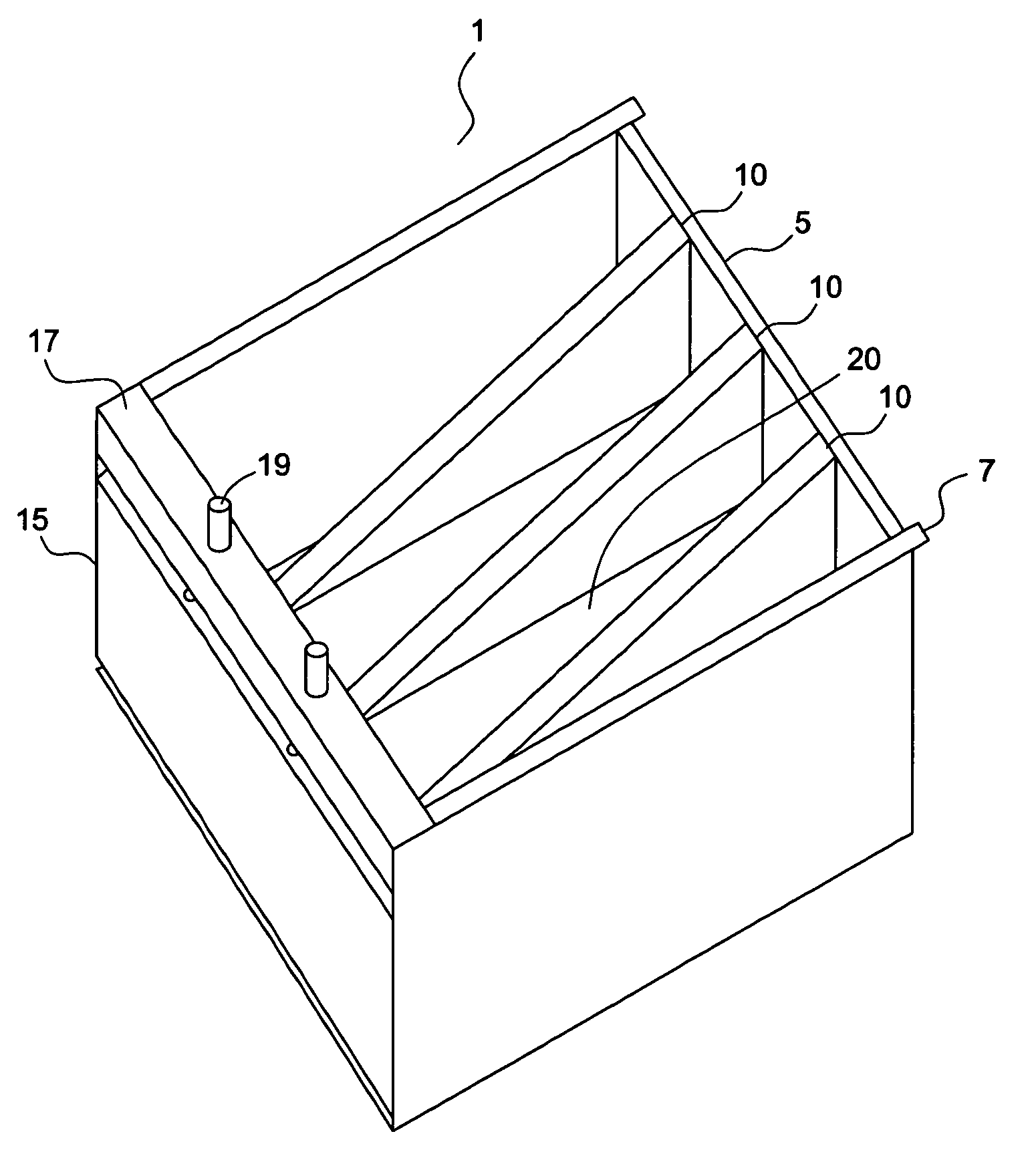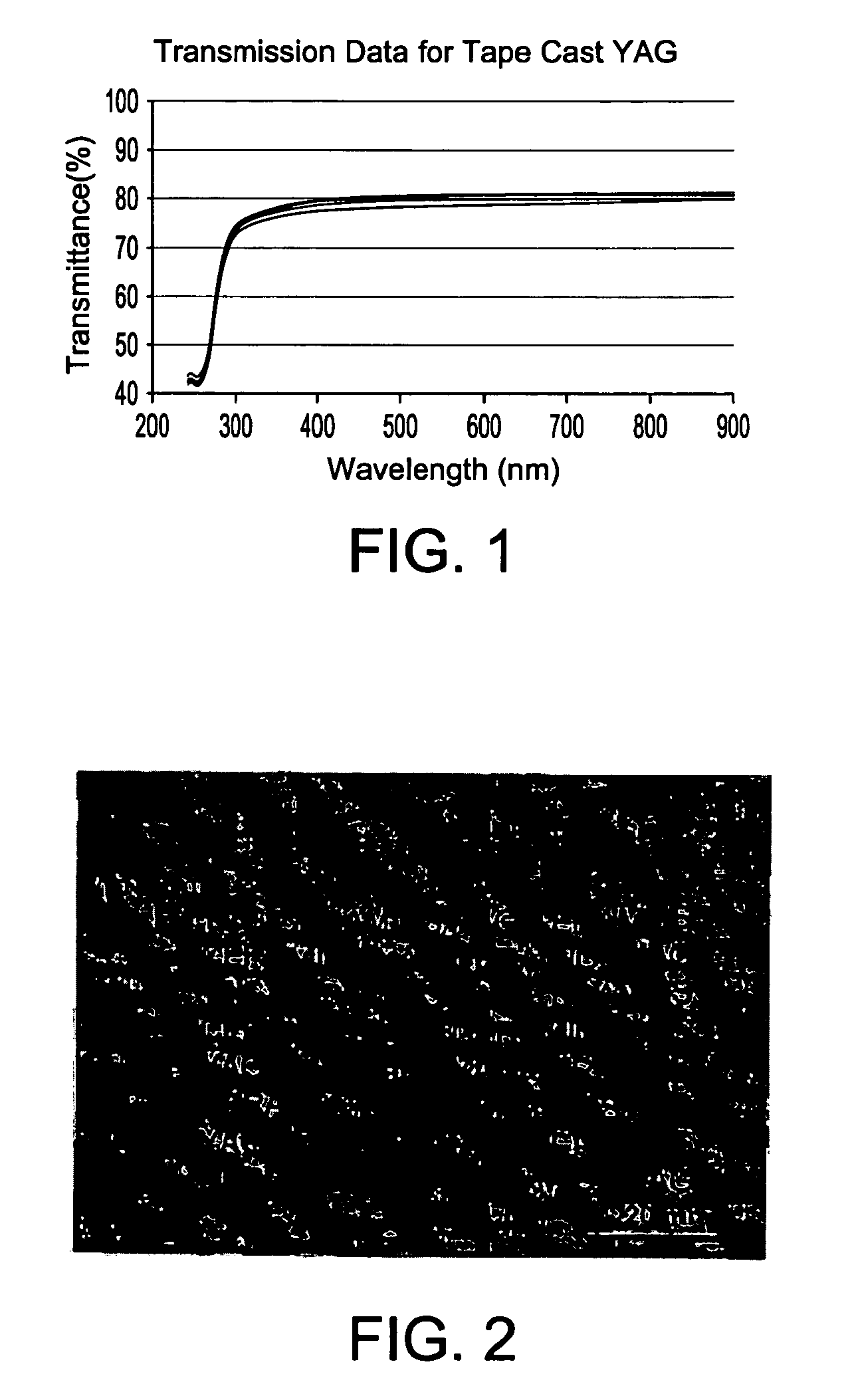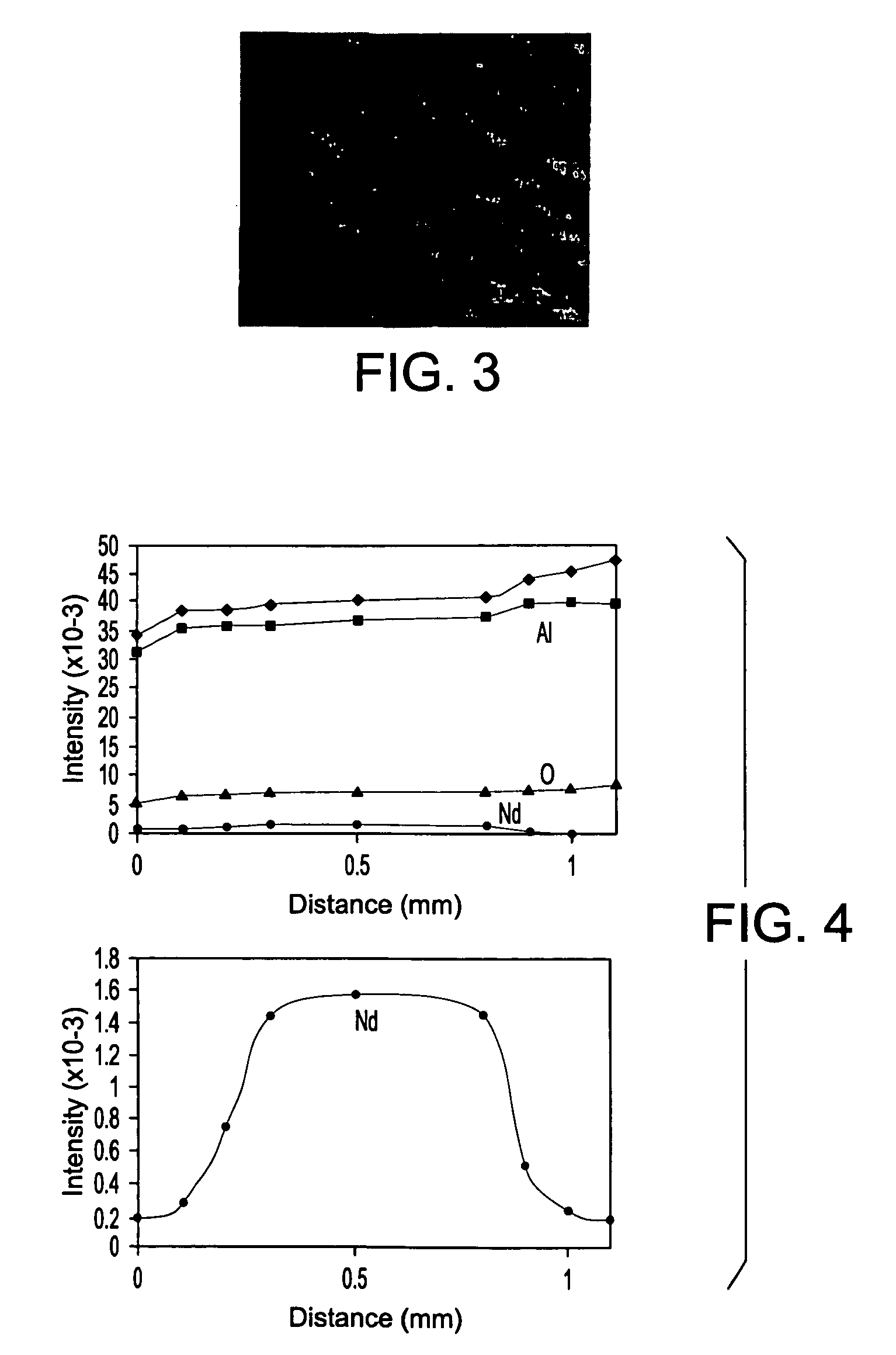Method for manufacture of transparent ceramics
a technology of transparent ceramics and manufacturing methods, applied in the direction of luminescent compositions, domestic applications, shape conveyors, etc., can solve the problems of difficulty in forming a compositional gradient of dopant through sintered sintering, and inability to produce thin transparent plates
- Summary
- Abstract
- Description
- Claims
- Application Information
AI Technical Summary
Benefits of technology
Problems solved by technology
Method used
Image
Examples
example 1
Manufacture of YAG from Alumina and Yittria Powders
[0067]A 250 ml high density polyethylene mill jar is filled to 33.3% vol capacity with 5 mm diameter Y2O3-stabilized ZrO2 milling media. Oxidized Menhaden fish oil (1.40 g, grade Z-3, Tape Casting Warehouse), xylene (17.30 g. J. T. Baker) anhydrous, denatured ethyl alcohol (17.30 g, Pharmco) and TEOS (0.35 g, 99.999+% metals basis, Alfa Aesar) are added to the mill jar.
[0068]Y2O3 powder (99.9999% pure, 5000 nanometer dia. HJD International) and Al2O3 powder (grade AKP-50, 99.999% pure, 300 nanometer dia., Sumitomo Chemical Company, Ltd.), are dried at 100° C. for 24 hrs and added to the mill jar while still hot from the drying oven to produce a mixture. The powders are employed in a molar ratio of 5:3::Al2O3:Y2O3. Total powder weight is 70.00 g.
[0069]The mixture of oxidized Menhaden fish oil, xylene, denatured ethyl alcohol, TEOS, Y2O3 powder and Al2O3 powder is milled for 24 hrs to produce a first slurry. Polyvinyl butyral (3.49 g,...
example 1a
[0073]The procedure of example 1 is followed except that cast tape is dried at room temperature in air for 2 hrs.
example 2
[0074]The procedure of Example 1 is followed, except that cyclohexanone (4 drops, Aldrich Chemical Company) is added to the first slurry prior to additional milling to yield the milled slurry.
PUM
| Property | Measurement | Unit |
|---|---|---|
| pressure | aaaaa | aaaaa |
| viscosity | aaaaa | aaaaa |
| viscosity | aaaaa | aaaaa |
Abstract
Description
Claims
Application Information
 Login to View More
Login to View More - R&D
- Intellectual Property
- Life Sciences
- Materials
- Tech Scout
- Unparalleled Data Quality
- Higher Quality Content
- 60% Fewer Hallucinations
Browse by: Latest US Patents, China's latest patents, Technical Efficacy Thesaurus, Application Domain, Technology Topic, Popular Technical Reports.
© 2025 PatSnap. All rights reserved.Legal|Privacy policy|Modern Slavery Act Transparency Statement|Sitemap|About US| Contact US: help@patsnap.com



